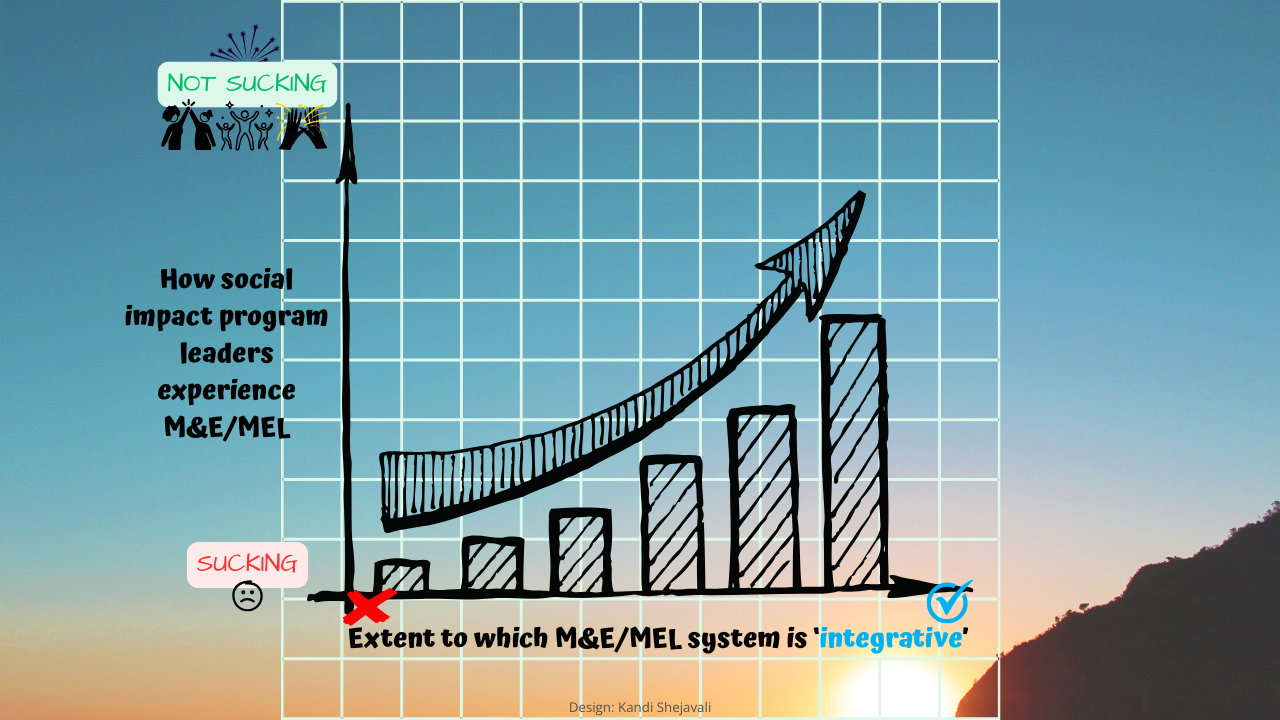“The sun around which an analysis orbits”: what it is, why and where to consider it in the overarching M&E system
Feb 28, 2022
What "sun" is this? Why, the unit of analysis of course!
We often hear about the ‘unit of analysis’ in the context of research studies, including the types of research studies that feature in monitoring and evaluation (M&E) systems.
But what is the unit of analysis?
Where does it feature in a project’s M&E system?
And why should a project’s overarching M&E system take the unit of analysis into account?
Let’s find out.
Defining the unit of analysis
In the context of research studies, the unit of analysis is defined as “the major entity that you are analyzing in your study” (Trochim, undated).
As examples:
- if a researcher were to compare the soil quality of different shared grazing areas across selected regions of a country, the unit of analysis would be the ‘grazing area’;
- if a study compared the Gross National Happiness of different countries, the unit of analysis would be the ‘country’; and
- if the research involved analyzing differences in patients’ wellbeing, the unit of analysis would be the ‘patient’.
In sum, the unit of analysis designates the element on which a given study will base its analytical examination. Or, put more poetically, it is the sun around which an analysis orbits.
Where does the unit of analysis feature in M&E systems?
First of all, let’s recap what an M&E system is
An M&E system can be defined as the system that:
- helps articulate a project’s objectives and the path to their attainment (often in the form of a theory of change);
- measures, analyzes, and reports on whether those objectives have been attained; and
- guides project adaptations to help optimize the achievement of intended results.
Then let’s define the different types of research studies that form part of an M&E system
Different types of research studies form part of an M&E system.
Such studies include, for example:
- baseline studies (which are conducted to establish the before-project-implementation situation);
- feasibility studies (which are conducted to assess the viability of a given intervention); and
- evaluative judgment-making exercises (which are conducted to assess the level of achievement of a project along specific criteria).
(Related data collection methods, such as surveys, focus group discussions, and key informant interviews might also be considered ‘studies’ in and of themselves. However, since they usually form part of a broader analytical exercise such as those listed above, we will not treat them as such in this context.)
Okay, now to the question of where the unit of analysis features in M&E systems
Each of the various types of studies that form part of an M&E system – i.e., baseline studies, feasibility studies, evaluative judgment-making activities, etc. – would feature a unit of analysis.
Let’s illustrate by drawing on an earlier example, that of a project aimed at enhancing rural livelihoods by working with farmers in different shared grazing areas to improve rangeland quality:
- The baseline study might compare the quality of the rangelands in each grazing area. In this case, the unit of analysis would be the ‘grazing area’.
- A feasibility study conducted for this same project might consider the feasibility of introducing different types of rotational grazing approaches, each of which would have an impact on rangeland quality but involve different implementation modalities. In this case, the likely unit of analysis would be the ‘rotational grazing approach’.
- Finally, two different evaluative judgment-making exercises might be conducted on the project:
- one to assess the project’s effectiveness in enhancing rangeland quality, where the likely unit of analysis would be the ‘grazing area’; and
- one to judge the value-for-money delivered by the project in terms of relative efficiency in delivering its outputs, where the likely unit of analysis would be the ‘project’ (as compared to similar or other appropriate benchmark projects).
Why should a project’s overarching M&E system take the unit(s) of analysis into account?
Taking the unit(s) of analysis into account in the setup of the overarching M&E system can be beneficial in several ways.
It can, for example:
- guide indicator selection, thus helping to ensure not only that the measurement needs of the various research studies/analytical exercises are met but, more broadly, that the most appropriate things are being measured;
- this carries the additional benefit of reducing costs by incorporating studies’ measurement needs into ongoing data collection (even if additional study-specific data collection needs to be undertaken down the line); and
- support a results orientation by helping the project team remained focused on the elements that the project aims to positively impact.
And if that’s not enough, taking the unit of analysis into account in the overall setup of the M&E system lends overall coherence to the system and helps make it more easily comprehensible.
Over to you!
PRACTICAL TIP #1: Identify the principal unit of analysis of each of the various research studies/analytical exercises that form part of your project’s M&E system.
PRACTICAL TIP #2: Considering your project’s table of indicators, assess whether the key unit(s) of analysis feature to the greatest extent feasible and practical to help meet the measurement needs of each of the studies. (By the way, you can also use this occasion to trim extraneous indicators from the M&E system.)
PRACTICAL TIP #3: Based on your findings in step #2, engage the project team to discuss updates to the M&E system that you deem to be necessary.
References:
Trochim, William (undated) Unit of Analysis. Web page. Research Methods Knowledge Base web-based textbook. Available at https://conjointly.com/kb/unit-of-analysis/.
Photo credit:
Guillermo Ferla on Unsplash
Suggestion for how to cite this article:
Shejavali, K. (2022, February 28). “The sun around which an analysis orbits”: what it is, where it features in M&E, and benefits of taking it into account in the overarching M&E system. Blog post. RM3 Consulting. Available at: https://rm3resources.com/blog/sun-around-which-an-analysis-orbits (accessed: [insert the date that you last accessed this article at the provided link]).





